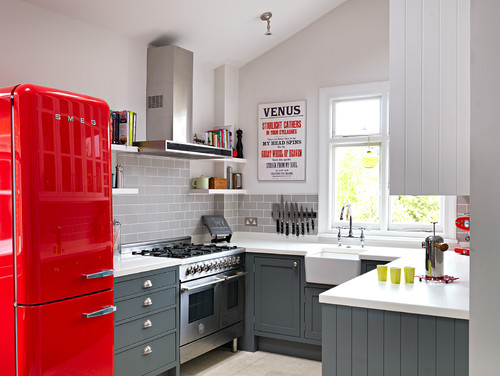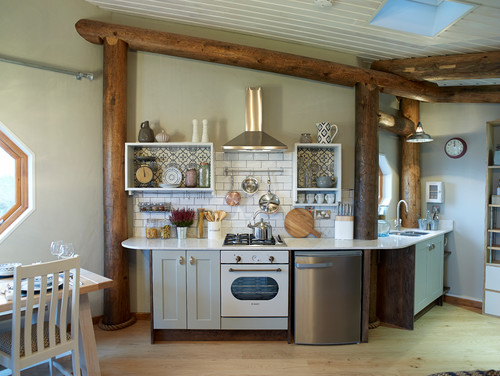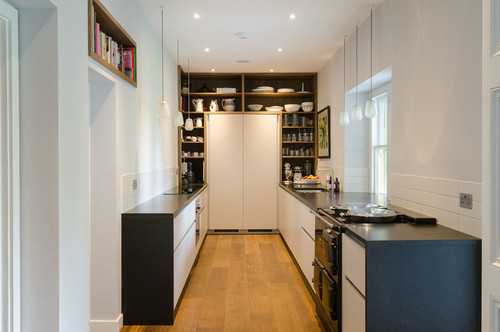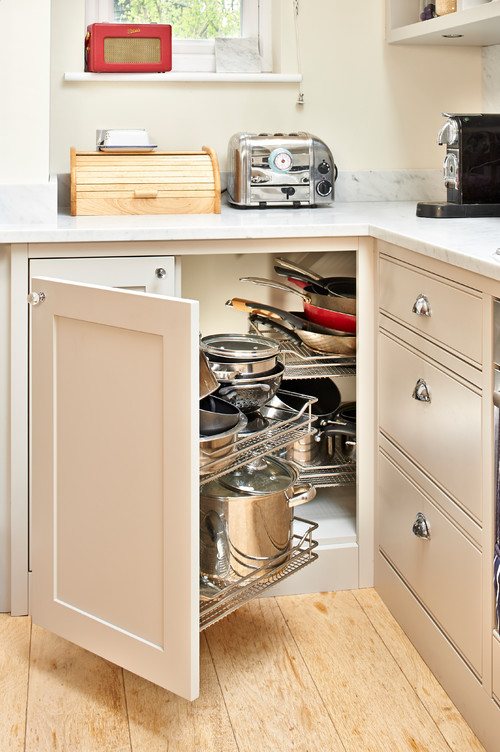How to Tell the Difference Between a Buyer’s Market and a Seller’s Market


This is SO IMPORTANT for you to know as a Buyer or Seller so that you can strategize your plan of action wisely and accurately. Of course, your agent can easily explain this to you, but you need to understand it! Make no mistake, if you don’t pay attention to the difference in these two markets, you may not enjoy the results of the transaction.
What you need to know when buying or selling a home.
One important thing to remember about the property market is that it’s always in a state of change. Sometimes the market is favorable to buyers and sometimes it’s favorable to sellers. But don’t worry, a knowledgeable agent can guide you in the sale or purchase of your next home, no matter what type of market you’re facing.
What is a Seller’s Market?
A seller’s market is simply a property market that benefits you as a seller. In a seller’s market, there’s a scarcity of properties, which can drive up the price of homes, especially in desirable locations.
Sellers can depend on real estate experts to know what the market is doing, but here are some signs of a seller’s market:
– Low inventory when compared to previous months and/or years
– Homes are selling faster
– Less than six months of inventory on the market
– More homes are selling
– Median sales prices are growing
– Less information in real estate ads; just the bare details
– “For Sale” signs don’t stay up long before being replaced with “pending” or “sold”
What is a Buyer’s Market?
A buyer’s market is the opposite of the seller’s market. If you’re buying at this time you’ll be spoiled for choice as the supply of homes on the market exceeds the number of buyers, giving you the chance to score a fantastic deal.
A sharp agent will quickly be able to tell you where the market lies, but here are some signs of a buyer’s market:
– Inventory that is high when compared to previous months and/or years
– Homes are selling more slowly
– More than six months in inventory on the market
– Sales prices are shrinking
– Fewer sales are taking place
– Real estate ads are growing in size, giving more details and/or images
– “For Sale” signs are staying longer, meaning the days on the market are longer too
How Do I Figure out the Months of Inventory in a Market?
1. Look for the total number of active listings for the month prior to the current one
2. Look for the total number of sold or closed transactions for the same time frame
3. Divide the total number of listings by the number of sales. This figure represents the number of months of inventory there are.
For example, let’s say there were 6,500 listings in one month’s time. During that same time, there were 1,500 properties that were sold. Divide 1,500 into 6,500 and you arrive at 4.3 months of inventory, meaning that this is a seller’s market.
While a savvy real estate agent is the best resource for this information, other resources include real estate listing websites and/or your local real estate association.
Do All Markets Follow the Same Cycles?
Markets are always in a state of flux. At its core, people are the driving force behind the real estate market.
For example, as more people move into a location, the more need there is for housing. If the number of properties in the area cannot support the number of people moving in, prices of existing homes will likely rise until more homes can be built.
This constant change to the supply and demand in a market is how markets shift back and forth from being more favorable for either buyers or sellers.
Can I Buy in a Seller’s Market?
Absolutely, but it’s not going to be a walk in the park. You’ll need determination, knowledge, and most importantly, someone on your side who knows the market inside and out.
Something to consider – you don’t know the seller’s true reasons for wanting to sell. Maybe there’s a divorce pending or another baby on the way and they need more space fast. Whatever is going on with the seller, a savvy agent will spot opportunities to help you and the seller arrive at a mutually agreeable solution.
One key reason it’s vital to engage an agent in a seller’s market is for their negotiating skills. While it’s important to always negotiate, a seller’s market calls for serious help to ensure that you don’t pay more than you need to.
Should I Wait to Sell?
It depends. Is it mandatory that you sell right now or could you wait until it’s a seller’s market again?
Consult with an agent to get his opinion about your chances of getting what you need or want for the sale of your home. He just might have some options you may not have considered that will help you get out from under your home and get on with your life.
Don’t be afraid to sell or buy if you think the market isn’t in your favor. The real estate market can be highly varied, so trust your agent to help you get the best possible results, no matter what the market looks like.
Source: CB Blue Matter
Pool School: A Study Guide


Armed with a little know how – you can make your pool season trouble free!
1. Evaluate the Task at Hand
Always check for leaks at the start of the season—all you need is a bucket. Just fill it three-fourths of the way full and mark the water line inside, place it in the pool, mark the line on the outside and let it float for a couple days. If the water goes down the same amount inside and out, it is from evaporation, but if it goes down more on the outside, there is a leak and you’ll need to call a pro.
2. Keep It Clean
- Skim Debris – If you have trees, bushes or other plants nearby, the wind can blow debris into the pool. To keep it clean, increase the water circulation and use fewer chemicals, and use a skimmer to scoop out the debris out on a weekly basis.
- Vacuum Frequently – Not all debris floats on top, so to get the hard-to-reach debris, you should vacuum the pool on a weekly basis for about half an hour. You can always buy an automated vacuum that runs on a schedule, so you don’t have to worry about it.
- Filter and Pump – To keep water clean and save energy, run the pump daily for every 10 degrees (e.g., if it’s 80 degrees outside, run the pool pump for eight hours). Keep water healthy and clear by cleaning the filter every other week. Simply empty the filter bag or remove the filter and hose it down. If the pump is unusually loud, leaking or doesn’t hold pressure, it’s time to call a professional. If you have a home warranty with pool coverage, you’ll also save time and energy not having to find a qualified service professional yourself.
3. Get an A in Chemical Chemistry
Test water levels weekly with a home pool water test kit to make sure chemicals are balanced and safe. Optimal chemical levels vary depending on the season and weather conditions, but the pool’s pH levels should fall between 7.2 and 7.8 consistently for the cleanest water. This will also help protect your pool equipment. Water becomes more acidic with lower pH levels, which can cause costly damage to your pump, filter and anything else that it comes in contact with.
Source: RisMedia
4 Steps to Take After Your Home Has Been Burglarized
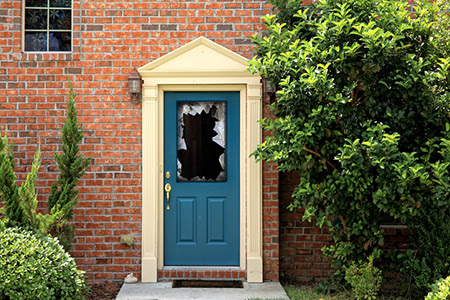

Your worst nightmare…arriving home to find that you have been the victim of a burglary. Home Invasion. Loss of your precious privacy and belongings. While nothing can take away that feeling, here are a few steps you can take while you recover from the shock of it all.
What would you do if you came home and found your house was broken into and your property stolen? For millions of Americans every year, this nightmare is a reality. In 2010, there were 2,159,878 burglaries in the U.S., equivalent to nearly 700 break-ins per 100,000 people, according to the Federal Bureau of Investigation.
Most victims in this situation find themselves totally unprepared and at a loss for what to do. Fortunately, there are steps you can take to regain control of the situation, improve the odds of recovering your property, and prevent your home from being broken into again.
Call the Police
Call the police when you spot the first sign of a break-in. The intruder may still be on your property and pose a threat to your safety. Seven percent of all home burglaries involve violence against household members, according to the Bureau of Justice Statistics.
You also need to call the police to get your case on file for insurance and legal purposes. A police report and investigation increases the strength of your insurance claim, as well as your odds of retrieving your property. The police also need to record crime scene evidence which can help convict suspects if they are caught. Don’t touch anything before the police arrive so that you don’t accidentally destroy evidence, such as fingerprints.
When the police arrive, they will want you to file a report. Take pictures to document what was stolen, and provide the police with a list of everything that was taken and its approximate value. As a preventive measure, it’s wise to take an inventory of valuable items ahead of time in case you are ever robbed.
Call Your Insurance Company
You should also copy your list of stolen items for your insurance provider. To maximize your odds of receiving reimbursement for stolen items, contact your insurance provider within 24 hours. They will need your police report to process your claim, so make sure you have already filed a police report before calling. Your insurance provider will probably send an adjuster to review the crime scene, so in order to avoid disrupting the evidence, you may wish to stay somewhere else until they arrive, if possible.
Review Your Security Camera Footage
If you have security cameras installed on your property, you should review them to see if there is any additional evidence. If you’re fortunate, you may have captured footage of the burglar breaking in, walking through rooms, or rummaging through items. You may also notice more clues or additional information about which items were stolen. Provide copies of any relevant footage to the police and to your insurance provider.
Evaluate Your Home Security
After the police and your insurance adjuster have finished reviewing the crime scene, you can begin cleaning up. You should also conduct a review of your home’s security with an eye towards preventing future burglaries. Once burglars have successfully broken into a home, they often return in the future, so it’s important to make sure you secure any vulnerabilities that enabled the initial break-in. The National Crime Prevention Council provides a home security checklist you can use to review your home security and identify any vulnerabilities that need to be fixed.
Having your home broken into is a traumatic and disturbing experience, but taking these steps can help you recover and restore your life to order as quickly as possible. Filing a report with the police, calling your insurance company, and reviewing your security footage will maximize your chances of getting your property returned and bringing those responsible to justice. Reviewing your home security can help prevent future burglaries and restore your peace of mind.
Source: RisMedia
How To Win A Bidding War Without Overspending


Winning a bidding war requires tactful strategy. What’s your next move?
Right now we are in a Seller’s Market here in Solano County. Oftentimes that means multiple offers over list price. It can be a frustrating and exhausting process. Read on for strategic tips!
It’s possible to win a bidding war without paying a cent more than you budgeted for.
-
Know what you can really afford
As far as emotional purchases go, buying a home ranks right up there with choosing a wedding dress — only the financial stakes are much higher. Unless you know ahead of time exactly how much house you can afford, you could easily be sucked into spending too much. Your lender or financial adviser can help you determine that number. Then it’s time to play ball.
“Submit your best and final offer early,” says Skyler Irvine, senior partner at Myriad Real Estate Group in Phoenix, AZ. “If $1,000 keeps you from pulling into the driveway of your dream home just because you wanted to play hardball, then you might regret this more than you can imagine.” But the flip side is also true. “If you get outbid because someone offered more than you were comfortable with spending, then you didn’t lose anything and made a smart financial decision.”
Here’s a real-life strategy from a client of Naples, FL, agent Gordon Campbell on how to submit the best offer in a “best and final” situation without going too high: “They simply added a clause stating that they would pay $1,000 more than the next ‘best and final’ capped at the original price as seen in the MLS.” The outcome? “They got the property for slightly more than the other bidder.”
-
Talk with the listing agent
You can put in an offer, but unless your agent makes the effort to speak with the listing agent, your offer, in a multiple offer scenario, will probably not stand out. Gary Hughes, a Virginia real estate agent, recently received 13 offers for a property he listed. “Twelve were just emailed, and the buyers’ agents did not speak to me,” he says. But one agent called and had the lender follow up. “The lender and the buyer’s agent were able to address a concern in a way that assured me it would get to settlement. It wasn’t the highest offer, but it was close. Those conversations made all the difference.”
-
Propose a shorter closing
It’s always beneficial to find the seller’s motivation for selling (if you can). Let’s say they just accepted a new job in another part of the country. This seller is probably highly motivated to sell quickly. “If you can close the deal in two or three weeks, you may win over the higher offer that comes with a six-week closing period,” says Eric Bowlin, a real estate investor.
But just how do you go about closing faster? Here’s one way: “Tighten up your inspection time frame so sellers know that they can get through to a closing date quicker,” says William Golightly, a Florida agent.
Buyers can also be preapproved, or even better, get a conditional approval, from their lender. Going through the mortgage process first allows you to close just as fast as all-cash buyers do. -
Rent the house back to the sellers
Some sellers aren’t interested in a short closing at all. In fact, the opposite could be true. Sellers who don’t have to sell quickly but who are just making a change, such as downsizing or upsizing, might want a long closing or some sort of flexible deal to give them time to find their new home. “Being able to rent back the property to the seller for a few months while they solidify their next purchase can go a long way into not needing to overbid on the property,” says Aaron Norris, a California real estate investor with The Norris Group.
-
Submit an as is offer
The fewer conditions you put on negotiating the house price, the more attractive you look to sellers. Consider offering to buy the house as-is. Miami Beach, FL, agent Jill Hertzberg says, “You can opt out of conducting inspections.” But since this is an extremely risky proposition, Hertzberg suggests instead of waiving the inspection altogether, decrease the inspection period to two days maximum. Lilia Biberman, a Boca Raton, FL, agent says to only waive the inspection “if you have a firm grasp of all the possible defects a property may possess and the costs associated with remedying those defects.” Also, if you’ll be paying in cash, you don’t need a financing contingency, which protects buyers who don’t secure financing in time.
Source: Trulia Blog
How to Keep a Small Kitchen Organized


Everyone LOVES a big kitchen. Lots of room to whip up your culinary delights! The truth is that anyone can adjust and create beautiful meals in a small kitchen. Its all in the organization!
It can be tricky keeping a compact cooking space tidy, but these ideas can help keep a small kitchen organized.
Contrary to what you might think, you don’t need acres of counter space or dozens of drawers and cupboards to have an organized kitchen that’s a joy to cook in. If anything, a smaller kitchen can encourage you to streamline your stuff and live more simply. Who wants cabinets chock-full of unloved pasta machines and dusty bread makers anyway? Check out these easy ways to restore order to your less-than-enormous kitchen.
1. Start with a utensil rack. Not only will it give you a place to hang slotted spoons and ladles for easy access while cooking, it will also free up precious drawer space.
Even in the tiniest kitchen, you can usually find somewhere to squeeze one in — under a cupboard or shelf or above the stove. Stainless steel models work in most styles of rooms and are easy to wipe down.
2. Get a knife holder. A knife block or magnetic rack is one of those simple items that really do make a difference in how functional your kitchen is. After all, rummaging around in a drawer for a piece of kitchen gear you use frequently is time-consuming and dispiriting.
A wall-mounted rack like this one keeps things orderly without swallowing too much space. Buy decent knives if you can afford it, as they should last a lifetime. One advantage of a magnetic rack is that you can slowly build up your collection of knives, buying one at a time, rather than having to invest in one large block complete with knives, which can be pricey. If you’re starting from scratch, a bread knife, paring knife and chef’s knife are essential.
3. Assign dedicated storage areas. Kitchen clutter can easily accrue, so it makes sense to assign different cupboards a specific purpose and stick to it. And dedicate a few minutes every couple of weeks to returning stray plastic lids or pot covers to their homes and sweeping out spilled spices and coffee grounds — it really will make a difference in how pleasurable (and easy) your kitchen is to use day to day.
4. Reduce your numbers. If your kitchen is really mini, or even if it isn’t, think about doing a good edit of your paraphernalia. Be honest: Do you really need more than a handful of plates, mugs or glasses if there are only one or two of you?
Having less stuff can be immensely freeing — and will significantly reduce the amount of time you spend washing up, which is a big bonus.
5. Gather and display. This cute kitchen demonstrates how you can be organized and chic at the same time. A charming crock to hold wooden spoons, a wall-mounted crate or two to provide a home for vintage-style scales and jugs, a small wall-mounted spice rack — they all add a pretty touch as well as having a practical function.
6. Be clever with your cabinets. Use every spare inch in a small kitchen by building recessed shelves where feasible. Here, they surround an integrated refrigerator. With this design solution, wall space that’s too skinny or awkwardly shaped for extra cabinets can still be used to hold frequently used items. In this kitchen, it also helps open up the room and leads the eye to an appealing feature.
The other clever feature in this kitchen is the cookbook niche above the door — another neat storage trick that doesn’t take up too much room. Ask a builder if one can be carved out from an existing wall.
7. Go minimal. Are you in the process of picking new cabinets for your compact kitchen? Consider this look. Ultra-plain, handleless cabinets in a nude hue are soothing to look at and give a sense of visual order. Pick a seamless backsplash such as this slab of marble, since tiles with grout can look busy.
8. Get in a tight corner. When space is tight, an ingenious trio of pullout corner drawers is a lifesaver, helping to solve the problem of lost space in those awkward-to-access base cabinets.
If you’re remodeling, think about how you’d use such drawers — for cutlery, towels, pans, dishes? Here, a slimmer top drawer is complemented by the two deeper ones, so all the bases are covered.
9. Put the pans away. Similarly a pullout pan rack can be a gift in a small kitchen, creating an organized home for frying pans and saucepans and keeping you from tearing your hair out as you hunt around in the backs of cupboards. Also try using racks for items such as steamers or large, unwieldy casserole dishes.
10. Organize inside. It may sound like a no-brainer, but often what makes a kitchen, big or small, organized is how we arrange the insides of our cupboards. Shelf and drawer dividers, hooks, racks and other storage devices are key to keeping order. Consider what works for you and go custom if you can. Are you a Mason jar and Tupperware kind of person? Do you prefer mugs on hooks, shelves or in drawers? Storage is often about personal preference. Here, the slim slots for chopping boards and placemats are a brilliant idea, as is the slim pullout spice rack.
Source: CB Blue Matter / Houzz

 Facebook
Facebook
 X
X
 Pinterest
Pinterest
 Copy Link
Copy Link












